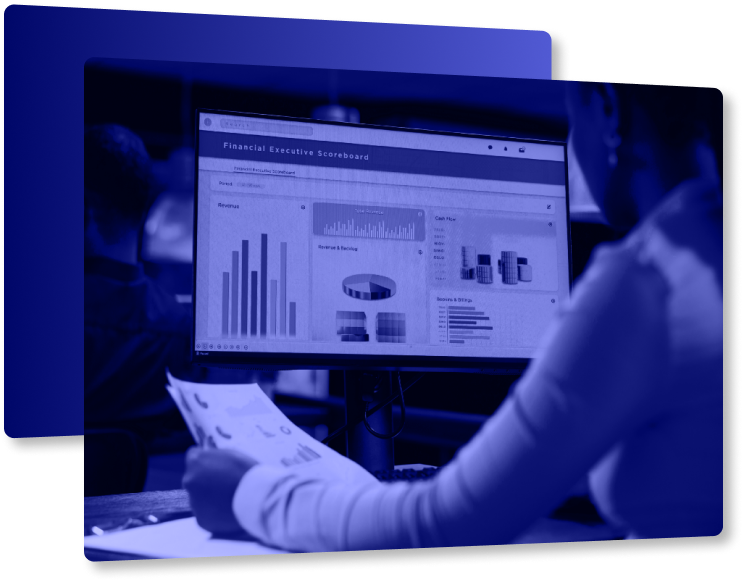In today's data-driven world, organizations across various industries are constantly collecting and analyzing vast amounts of data. This data holds valuable insights that can improve decision-making processes and drive business growth. When it comes to workplace safety, effective data analysis and reporting are crucial for identifying risks, monitoring incidents, and implementing preventive measures. This is where HSE.AI (Health, Safety, and Environment Artificial Intelligence) comes into play. HSE.AI empowers organizations to separate and categorize data, generate detailed reports supported by statistical graphics, and keep results up-to-date. In this article, we will explore how HSE.AI enhances workplace safety through data analysis and reporting.
Data Analysis and Reporting: A Powerful Combination
HSE.AI provides organizations with the ability to extract meaningful information from their data and present it in a comprehensive manner. By leveraging advanced analytics and reporting capabilities, HSE.AI enables the identification of trends, patterns, and potential safety hazards. Let's delve into the various aspects of data analysis and reporting with HSE.AI.
1. Separating and Categorizing Data
With HSE.AI, organizations can efficiently separate and categorize their data according to various parameters such as incident type, location, department, or severity. This categorization allows for a more granular analysis and targeted decision-making. By organizing data in a structured manner, HSE.AI simplifies the process of generating accurate reports and ensures that the right information is available at the right time.
2. Statistical Graphics for Visual Representation
Visualizing data is a powerful way to convey complex information in a digestible format. HSE.AI offers a range of statistical graphics, including charts, graphs, and heatmaps, to represent safety-related data. These visuals provide a clear understanding of trends, correlations, and potential areas of improvement. Decision-makers can easily interpret the graphical representations generated by HSE.AI, enabling them to make informed choices to enhance workplace safety.
3. Print and Share Reports
HSE.AI enables organizations to generate comprehensive reports with just a few clicks. These reports can be printed for offline use or shared digitally with relevant stakeholders. Whether it's management, safety officers, or regulatory authorities, HSE.AI reports facilitate effective communication and collaboration. By sharing reports, organizations can foster a safety-conscious culture and encourage proactive measures to mitigate risks.
4. Real-time Data Updates
Workplace safety is an ongoing process that requires constant monitoring and analysis. HSE.AI ensures that instant variables in the data are quickly reflected in the reports. Whether it's the addition of new incidents, changes in safety protocols, or the implementation of preventive measures, HSE.AI keeps the reports up-to-date. This real-time data update feature ensures that decision-makers always have the latest information at their fingertips.
Conclusion
Data analysis and reporting are essential components of effective ai workplace safety management. HSE.AI empowers organizations to separate, categorize, and analyze their data to identify risks, monitor incidents, and implement preventive measures. With HSE.AI, organizations can generate comprehensive reports supported by statistical graphics, ensuring that decision-makers have the information they need to enhance workplace safety. By embracing HSE.AI, organizations can create a safer working environment, protect their employees, and drive sustainable growth.
FAQs (Frequently Asked Questions)
How does HSE.AI contribute to workplace safety?
HSE.AI contributes to workplace safety by enabling organizations to separate and categorize their data, generate reports supported by statistical graphics, and keep the results up-to-date. This helps identify risks, monitor incidents, and implement preventive measures effectively.
Can HSE.AI be customized to specific industries or organizations?
Yes, HSE.AI can be customized to meet the specific needs of different industries and organizations. It can adapt to various data structures, incident types, and safety protocols, ensuring a tailored approach to workplace safety.
What are the benefits of using statistical graphics for data analysis?
Statistical graphics provide
a visual representation of data, making it easier to identify patterns, trends, and potential safety hazards. They help decision-makers interpret complex information quickly and make informed choices to enhance workplace safety.
Can HSE.AI reports be shared with external stakeholders?
Yes, HSE.AI reports can be shared with anyone, including external stakeholders such as regulatory authorities or auditors. This promotes transparency, collaboration, and accountability in maintaining workplace safety.
How frequently are the HSE.AI reports updated?
HSE.AI reports are updated in real-time, reflecting any changes or additions to the data. This ensures that decision-makers always have the most current information to guide their safety initiatives.
Is HSE.AI compatible with existing safety management systems?
Yes, HSE.AI is designed to integrate seamlessly with existing safety management systems. It can leverage data from multiple sources and enhance the capabilities of existing safety protocols, promoting a holistic approach to workplace safety.


